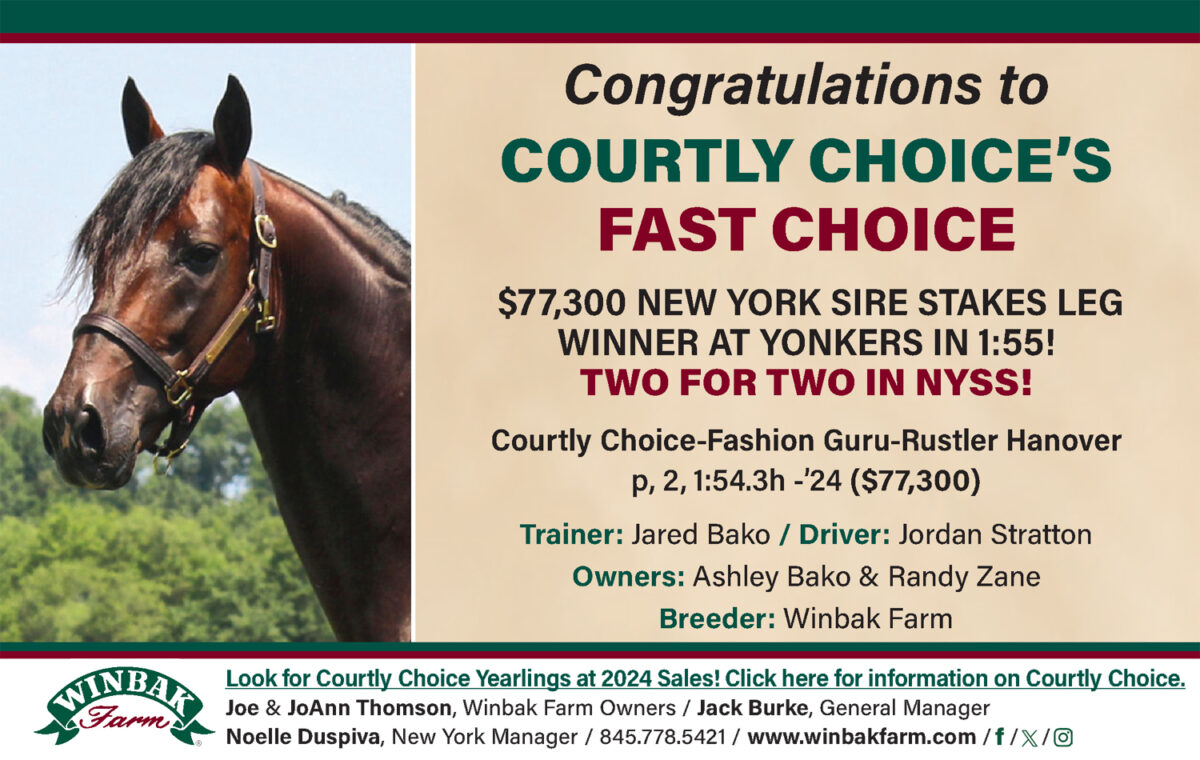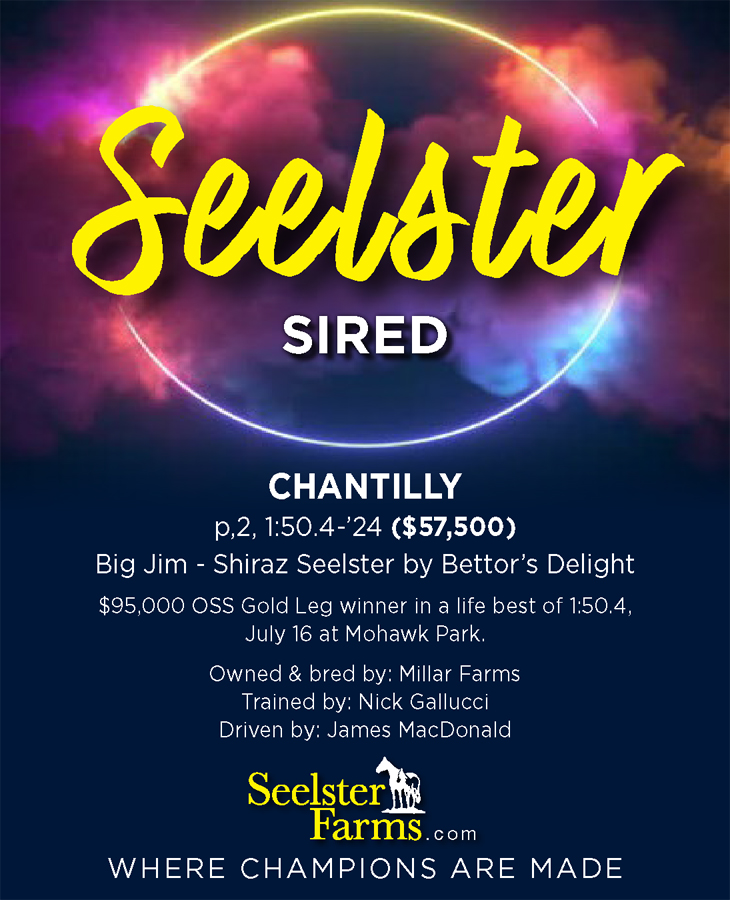

Racing babies: it’s more than just winning
by Dean A. Hoffman
It was one of the most impressive debuts I’ve ever seen by a 2-year-old.
Yet, the horse finished third and earned $12.
So what’s the big deal, right?
It was June, 1984, and it took place at Scioto Downs. I went to the track that night specifically to see a 2-year-old trotting filly in a $100 baby race scheduled before the regular card. (I don’t think I even stayed around for the regular card).
My interest in this filly stemmed from the fact that I’d lusted after her half-sister eight months earlier when I saw her listed in the Harrisburg catalog. She was an unraced 2-year-old entered in the sale. I didn’t think she would bring much, and I have this thing for trotting fillies — and potential broodmares.
So I was crestfallen to arrive in Harrisburg and learn that the object of my attention — an Arnie Almahurst lass named Fancy Patty — was withdrawn from the Harrisburg sale. C’est la vie.
(By the way, Fancy Patty’s first foal was Frisky Frazer, an international star in Europe and winner 48 times in 133 tries and earned the equivalent of $900,000).
So when Fancy Patty’s three-quarter-sister showed up in a baby race at Scioto Downs, I just had to be there. In fact, I recall talking to my USTA colleague David Carr — now a Hall of Famer in the Communicators Corner — about going to the races with me. He demurred.
So I go to Scioto and watch this filly make her debut. She was trained and driven by George Sholty.
When the gate left, Sholty took her to the rail and found a seat back in the pack. She lingered there for a half-mile or so and then George eased her out to follow other horses. She was still back in the pack, steadily advancing.
It wasn’t until they turned into the stretch — the final 200 yards or so — that George let her trot.
And what a sight it was. She surged forward and showed a flawless gait and good finishing kick. And she did it all without George asking her.
I was mightily impressed. But, again, she finished third and earned $12 for her efforts. How impressive can that be, right?
That filly’s name was Fancy Crown and later that year in a time trial she became the fastest 2-year-old trotter in history with a 1:55.4 time trial at Lexington. And the next year she reigned over the sport as the Horse of the Year.
No, it wasn’t that baby race that made Fancy Crown famous, but I think that race was a vital part of her education as a racehorse.
George Sholty wasn’t trying to impress anyone or win money for her owners in that $100 race. He was merely educating Fancy Crown. George was a good enough horseman to appreciate that the first few starts of a baby’s career can set a pattern. Send a baby down the road from the first start and you might soon have a horse that thinks leaving the gate full-tilt is the only way to race.
George was intent on teaching Fancy Crown to take off the gate, be rated, follow horses amicably, pass horses, and finish the mile fast. And that’s exactly what Fancy Crown did that day.
It’s easy to forget how critical baby races or qualifiers are for 2-year-old. Good horsemen, however, don’t forget.
Trainers often say that 2-year-old are the most honest racehorse because many will give you all they have.
“Two-year-olds haven’t learned to cheat yet,” I’ve heard from more than one horseman. Once a horse learns that racing is exhausting hard work, they can easily begin to give less than 100 per cent. That’s particularly true if the horse has an ache or pain somewhere — and most of them develop such aches.
I recall master horseman Howard Beissinger telling me that he never wanted to train a young horse all it could go. He wanted his young horses to still be up on the bit when they finished, to be confident that they could still go more if necessary.
“Once you find out how much a young horse can go, then the horse also knows that’s all he can go and he isn’t quite as willing,” says Beissinger.
Good horsemen know how important the first few races of a horse’s career are. They are not so important in terms of earnings or record, but those first few races can set a pattern that will mark the horse’s career. Good catch-drivers know and understand the importance of educating a young horse. That’s what George Sholty was doing with Fancy Crown.
I realize that trainers are often under pressure from owners to win-win-win. It’s not so easy to explain to an owner — who has paid all the bills and stakes payments — that the first few starts area all about education and not about money.
I recall hearing that one owner in Europe did not permit young horses to start in one-mile (1609 meters) races. The owner’s theory was that mile races are basically sprints and it taught the horse to go-go-go. This owner preferred to see young horses introduced to racing in longer races in which they had to be rated, trail, and pass horses — the same thing that Sholty did with Fancy Crown.
I recall a trainer years ago coming to me in a sour mood years ago.
“Dean, one of my biggest owners came to me and told me he wanted me to do everything possible to keep his 2-year-olds undefeated. How can I deal with a pressure like that?” he whined.
“Oh, that’s easy,” I replied. “Turn all of those SOBs out for rest of the year. That way they’ll be undefeated. Easy.”
That’s the only way I know to keep a horse unbeaten. And I still admire horsemen who understand the importance of educating a baby in its first few starts.















